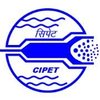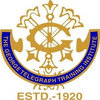Filter interviews by
Delhi Paramedical & Management Institute Science Faculty Interview Questions and Answers
Delhi Paramedical & Management Institute Science Faculty Interview Experiences
1 interview found
I applied via Walk-in and was interviewed in Aug 2022. There were 3 interview rounds.

(9 Questions)
- Q1. How will you trained students.
- Q2. What is the motive to teach students
- Ans.
The motive to teach students is to impart knowledge, skills, and values that will help them succeed in life.
To help students develop critical thinking and problem-solving skills
To prepare students for future careers and life challenges
To inspire students to pursue their passions and interests
To instill values such as integrity, empathy, and respect
To contribute to the growth and development of society as a whole
- Q3. How will you tackle the students
- Q4. What is your method of teaching
- Ans.
I use a student-centered approach to teaching, incorporating active learning and real-world examples.
Encourage student participation through discussions and group work
Provide hands-on activities and experiments
Relate concepts to real-world examples to increase relevance
Use technology to enhance learning, such as online simulations or interactive whiteboards
- Q5. How will you motivate the students
- Q6. What are methods for skilled and professional development of students
- Ans.
Skilled and professional development of students can be achieved through various methods.
Encouraging participation in extracurricular activities
Providing opportunities for internships and apprenticeships
Offering mentorship programs
Incorporating hands-on learning experiences
Providing access to industry professionals and networking events
- Q7. How will you modernized and digiltalized the students
- Q8. What qualities you have as a good teacher
- Q9. Explain your method of teaching
- Ans.
I use a student-centered approach, incorporating interactive activities and real-world examples to engage and challenge students.
Encourage active participation and discussion
Provide hands-on activities and projects
Incorporate real-world examples and case studies
Use technology to enhance learning
Provide regular feedback and assessments
(1 Question)
- Q1. Explain your method of teaching
- Ans.
I use a student-centered approach to teaching, incorporating interactive activities and real-world examples.
Encourage active participation and discussion
Provide hands-on activities and projects
Relate concepts to real-world examples
Use technology to enhance learning
Provide regular feedback and assessments
Interview Preparation Tips
Top trending discussions






Interview questions from similar companies

I applied via Naukri.com and was interviewed in Jan 2023. There were 4 interview rounds.

(1 Question)
- Q1. Demo on Subject you teach
(1 Question)
- Q1. Meeting with Dean / Director
(1 Question)
- Q1. Meeting with Registrar
Interview Preparation Tips

Science Teacher Interview Questions & Answers
Oakridge International Schoolposted on 6 Jul 2022
I applied via Naukri.com and was interviewed in Jun 2022. There were 3 interview rounds.

(1 Question)
- Q1. What are your salary expectations?
(1 Question)
- Q1. 1. What are charges? 2. Will you be able to finish in short time?
- Ans.
Charges are fundamental properties of matter that can be positive or negative.
Charges are responsible for the electromagnetic force.
Like charges repel each other, while opposite charges attract.
Charges can be transferred between objects through various processes such as friction, conduction, and induction.
The unit of charge is the Coulomb (C).
Examples of charged particles include protons, electrons, and ions.
Interview Preparation Tips
But unfortunately the lesson plan is not acknowledged during the process. The faculty taking interview is rude and makes you feel unheard. An opportunity to display your skills is not provided. They cut you off while you are presenting.Novel methods of teaching are not welcome.

I applied via Walk-in and was interviewed in Apr 2024. There was 1 interview round.
(2 Questions)
- Q1. Do u know kannada
- Q2. Are u from Bangalore
- Ans.
Yes, I am from Bangalore.
Yes, I am a native of Bangalore.
I have lived in Bangalore for the past 10 years.
I am familiar with the local culture and language of Bangalore.
Interview Preparation Tips

I applied via Walk-in and was interviewed in Apr 2024. There was 1 interview round.
(1 Question)
- Q1. Introduce yourself and research paper publications Details
Interview Preparation Tips

I applied via Naukri.com and was interviewed in May 2022. There were 2 interview rounds.

(1 Question)
- Q1. Education details previous company work experience
Interview Preparation Tips
Speak fluently and good communication in english should have

Program Director Interview Questions & Answers
Gems Educationposted on 16 Feb 2022
I applied via Referral and was interviewed in Aug 2021. There was 1 interview round.
(2 Questions)
- Q1. Tell about yourself?
- Q2. Do you know about this role?
Interview Preparation Tips
Most important, be frank and truthful. That will surely help you succeed in one of the interviews/career for sure.

I applied via Naukri.com and was interviewed in Oct 2022. There were 2 interview rounds.

(3 Questions)
- Q1. Self introduction of personal
- Q2. Explanation about experience
- Q3. Explanation about future progress
- Ans.
I believe that future progress will be driven by technological advancements and a focus on sustainability.
Technological advancements will continue to shape the way we live and work
Sustainability will become a top priority for individuals and businesses alike
Renewable energy sources will become more prevalent
Artificial intelligence and automation will transform industries
Virtual and augmented reality will change the way...
Interview Preparation Tips


(2 Questions)
- Q1. Asked about general approaches to learning and about my past experience
- Q2. Was asked about general child behavior
Interview Preparation Tips

I appeared for an interview in Jan 2025.
(7 Questions)
- Q1. What is motion?
- Ans.
Motion is the act of changing position or location over time.
Motion is the change in position of an object with respect to a reference point.
It can be described in terms of distance, displacement, speed, velocity, and acceleration.
Examples of motion include a car moving along a road, a ball rolling down a hill, and a person walking.
Motion can be linear, circular, oscillatory, or random.
- Q2. What is force?
- Ans.
Force is a push or pull acting upon an object as a result of its interaction with another object.
Force is a vector quantity, meaning it has both magnitude and direction.
Examples of forces include gravity, friction, tension, and normal force.
Force can cause objects to accelerate, decelerate, or change direction.
Newton's laws of motion describe the relationship between force and motion.
- Q3. What is inertia?
- Ans.
Inertia is the tendency of an object to resist changes in its motion.
Inertia is a property of matter that causes objects to stay at rest or in motion unless acted upon by an external force.
The greater the mass of an object, the greater its inertia.
Examples of inertia include a book staying on a table until pushed, a ball rolling until friction stops it, and a car continuing to move forward when the brakes are applied s...
- Q4. What is definition of speed?
- Ans.
Speed is the rate at which an object covers distance.
Speed is a scalar quantity, meaning it only has magnitude and no direction.
It is calculated by dividing the distance traveled by the time taken.
For example, if a car travels 100 miles in 2 hours, its speed is 50 miles per hour.
- Q5. What is the best definition of length?
- Ans.
Length is the measurement of the distance from one point to another in a straight line.
Length is a fundamental measurement in geometry and physics.
It is typically measured in units such as meters, centimeters, or feet.
Examples of length include the height of a person, the length of a table, or the distance between two cities.
- Q6. What is definition of velocity?
- Ans.
Velocity is the rate of change of an object's position with respect to time.
Velocity is a vector quantity, meaning it has both magnitude and direction.
It is calculated as the displacement of an object divided by the time taken to cover that displacement.
For example, if a car travels 100 miles in 2 hours in a northward direction, its velocity is 50 miles per hour north.
- Q7. What is the most accurate definition of speed?
- Ans.
Speed is the rate at which an object covers distance.
Speed is a scalar quantity, meaning it only has magnitude and no direction.
It is calculated by dividing the distance traveled by the time taken.
For example, if a car travels 100 miles in 2 hours, its speed is 50 miles per hour.
(2 Questions)
- Q1. What is the definition of velocity?
- Ans.
Velocity is the rate of change of an object's position with respect to time.
Velocity is a vector quantity, meaning it has both magnitude and direction.
It is calculated as the displacement of an object divided by the time taken to cover that displacement.
For example, if a car travels 100 miles in 2 hours eastwards, its velocity is 50 miles per hour east.
Velocity can be positive, negative, or zero depending on the direct...
- Q2. What is density?
- Ans.
Density is a measure of how much mass is contained in a given volume.
Density is calculated by dividing the mass of an object by its volume.
Common units for density include g/cm^3 or kg/m^3.
Density can help identify substances - for example, oil floats on water because it is less dense.
Interview Preparation Tips
Delhi Paramedical & Management Institute Interview FAQs
Tell us how to improve this page.
Interview Questions for Popular Designations
Interview Questions from Similar Companies
|
Assistant Professor
5
salaries
| ₹2.1 L/yr - ₹8 L/yr |
|
Admission Counsellor
5
salaries
| ₹1.8 L/yr - ₹3 L/yr |
|
Lecturer
4
salaries
| ₹2 L/yr - ₹2.6 L/yr |
|
Education Counsellor
4
salaries
| ₹2 L/yr - ₹3.5 L/yr |
|
Academic Counsellor
4
salaries
| ₹0.9 L/yr - ₹1.8 L/yr |

Jetking Infotrain

Central Institute of Plastics Engineering & Technology

Oakridge International School

The George Telegraph Training Institute
- Home >
- Interviews >
- Delhi Paramedical & Management Institute Interview Questions









